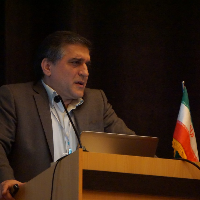An application of stochastic user equilibrium assignment in the origin-destination matrix estimation
Estimation (correction) of origin-destination (OD) matrix based on traffic counts data is an inexpensive approach to predicting travel demand in transportation networks. The general formulation of this problem is a bi-level optimization program in which the matrix estimation is solved at the upper level, and the traffic assignment is solved at the lower level. In congested networks, deterministic user equilibrium (UE) assignment is often used at the lower level. Deterministic approaches assume that all users perceive network travel times the same way, which is not the case in reality. In contrast, stochastic methods allow for different user perceptions. This research develops the OD matrix estimation problem (ODMEP) under the stochastic user equilibrium (SUE) constraint. The SUE assignment with the multinomial logit (MNL) route choice model is applied at the lower level. The MNL model is a well-known discrete choice model with a straightforward, closed-form choice probability. Spiess gradient-based approach is used at the upper level, which is efficient in large-scale networks. The Spiess OD estimation models with UE/SUE constraints are implemented on the large-scale Tehran network under different user perception variances represented by the scale parameter (θ) in the MNL formula. Two scenarios are adapted to create the initial OD matrix to compare the results of the two models (ODMEP with UE/SUE assignment). Results show that ODMEP with SUE constraint outperforms ODMEP with UE constraint in producing link volumes close to observed traffic counts. Furthermore, the OD matrix resulting from the SUE-based model is better fitted to the real OD matrix than the UE-based model. However, the two methods' results converge when the scale parameter increases (i.e., variance in users' perceptions of network travel times decreases). In the Tehran network, the SUE-based model reduces the ratio of RMSE of the OD matrix to real demand more than 10 percent (more than 20 percent in some cases) compared to the UE-based model when the scale parameter is less than 0.5.
- حق عضویت دریافتی صرف حمایت از نشریات عضو و نگهداری، تکمیل و توسعه مگیران میشود.
- پرداخت حق اشتراک و دانلود مقالات اجازه بازنشر آن در سایر رسانههای چاپی و دیجیتال را به کاربر نمیدهد.



